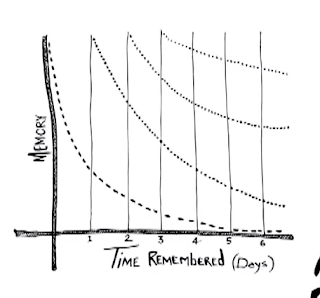Look at these images
 |
| This is education ... drip drip drip |
After all, Barak Rosenshine's principle is to deliver information in pieces...
CLICK HERE
In this American Educator article, University of Chicago/Urbana-Champaign emeritus professor Barak Rosenshine lists ten principles of classroom instruction based on research in cognitive science, research on the classroom practices of highly effective teachers, and research on cognitive supports to help students learn complex tasks.
• Begin a lesson with a short review of previous learning. Daily review can strengthen previous learning and can lead to fluent recall.
• Present new material in small steps with student practice after each step. Teach only small amounts of new material at any time, and then help students as they work with this material.
• Ask a large number of questions and check the responses of all students. Questions help students practice new information and connect new material to their prior learning.
• Provide models. Providing students with models and worked examples can help them learn to solve problems faster.
• Guide student practice. Successful teachers spend more time guiding students’ practice of new material.
• Check for student understanding. Monitoring student learning at each point can help them grasp the material with fewer errors.
• Get a high success rate. It is important for students to be operating at a level of proficiency before the teacher moves on.
• Provide scaffolds for difficult tasks. The teacher gives students with temporary supports to help them when they learn difficult tasks.
• Require and monitor independent practice. Students need extensive, successful, independent practice in order for skills and knowledge to become automatic.
• Engage students in weekly and monthly review. Students need to come back to learned material to develop well-connected and automatic knowledge.
“Principles of Instruction: Research-Based Strategies That All Teachers Should Know” by Barak Rosenshine in American Educator, Spring 2012 (Vol. 36, #1, p. 12-19, 39),
We can make notes
But there are so many pipes
Maria suggests that we should straddle the pipes and grab what we can
We need a system (her video explains S O C R A I T )
What if we could click on a "learn this" button (the way we hit LIKE)?
She says that some of us are diving in the Internet's flood of information
We could enroll in SOCRAIT
Do you see the LEARN THIS button?
We could review what we want to learn while we fish or have "free time"
The Forgetting Curve (and the impact of reviewing)
See the Forgetting Curve on the valve?
Then take action. this is one of the videos that should rank with Ken Robinson's 14 million views (Jan. 2013). Robinson talks about the problem and calls on us to encourage creativity.
Maria Andersen asks us to review what we have bumped into... until there is a "learn this" button, at least we can carry around a list of videos and ebooks and articles to review.
CLICK ON HER VIDEO
January 2013
GOAL: 14 million views by 2020.














It's just a click... Maria Andersen's idea appears more useful with every day that passes. I hope you will click on her video.
ReplyDelete